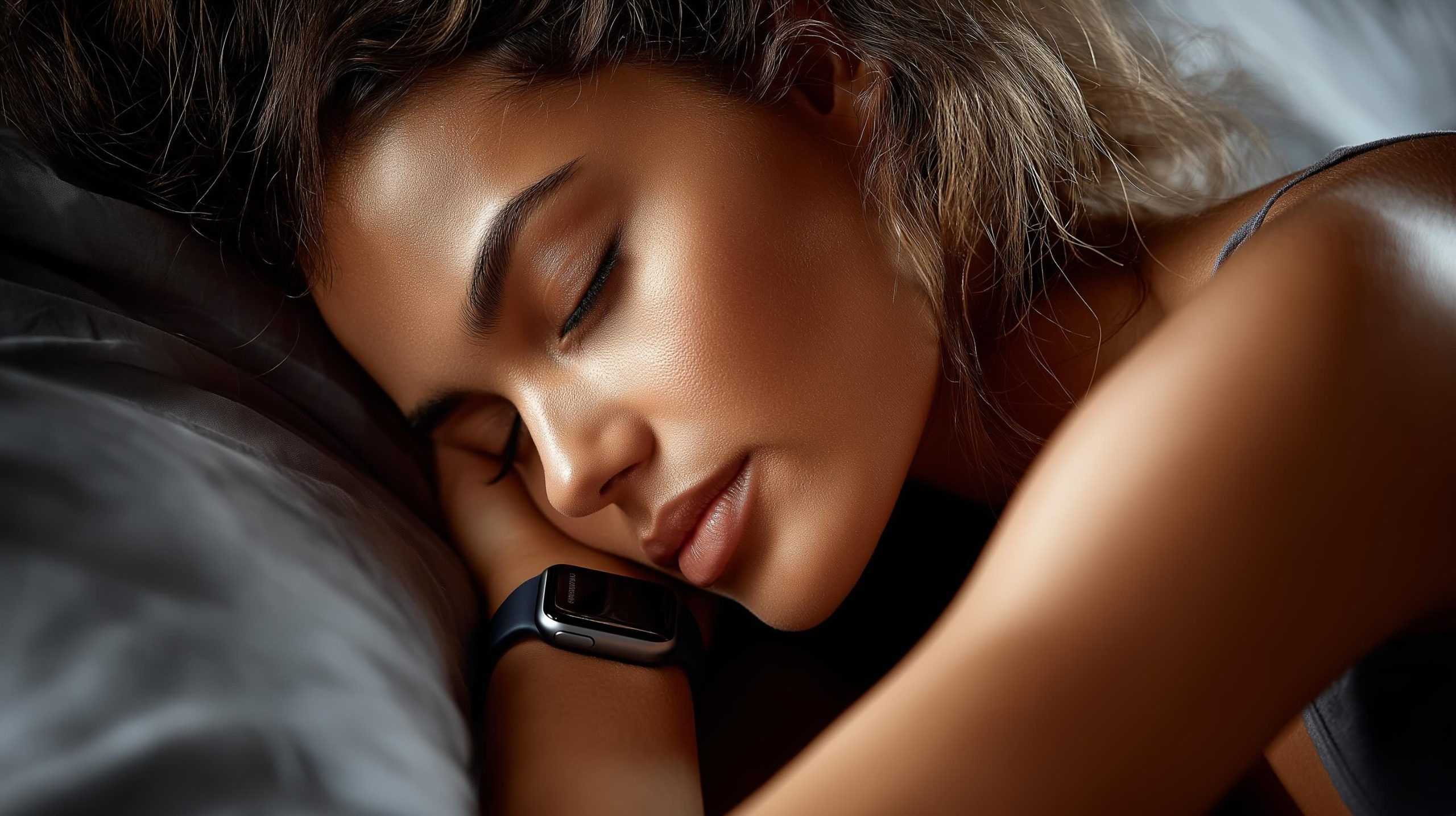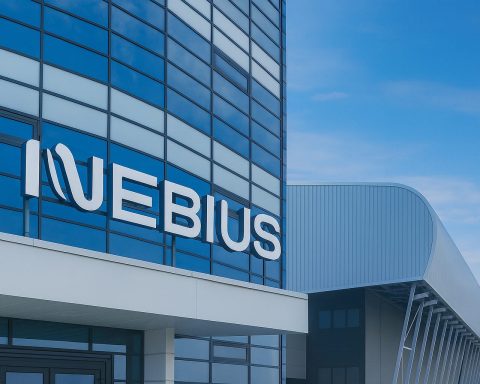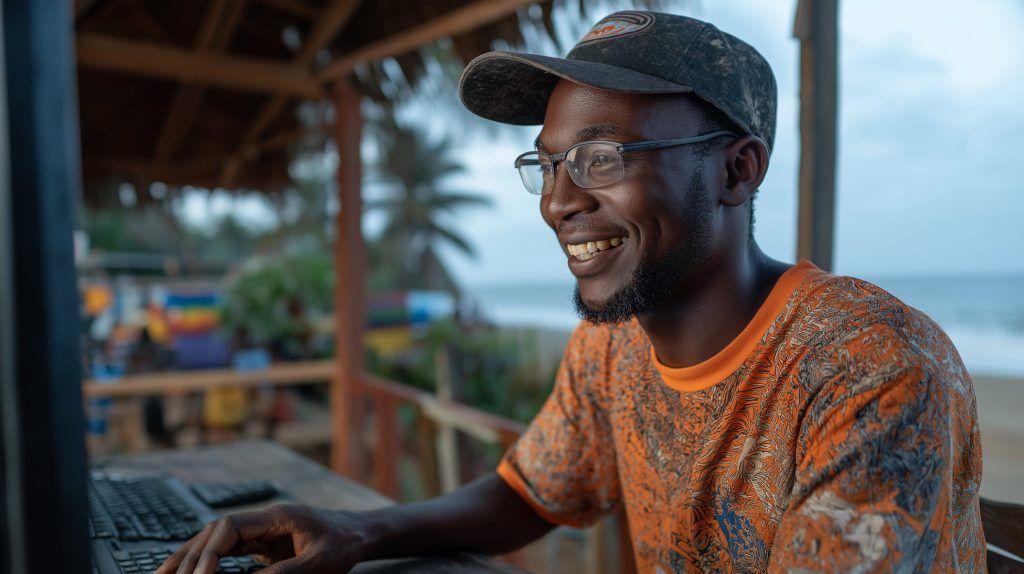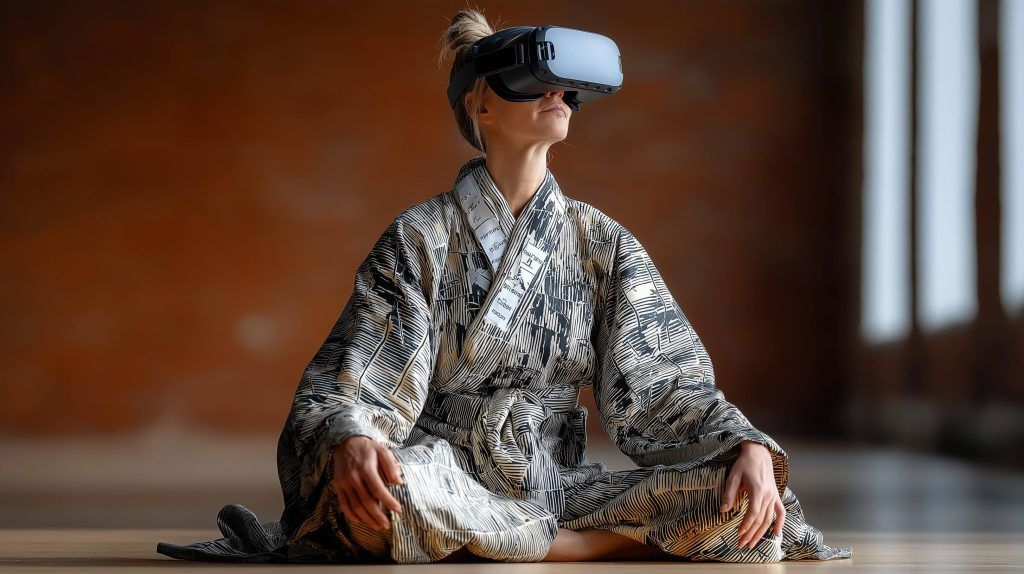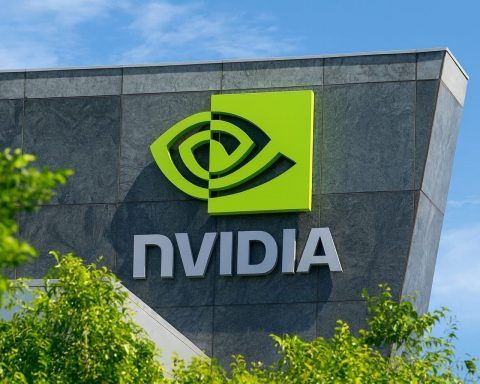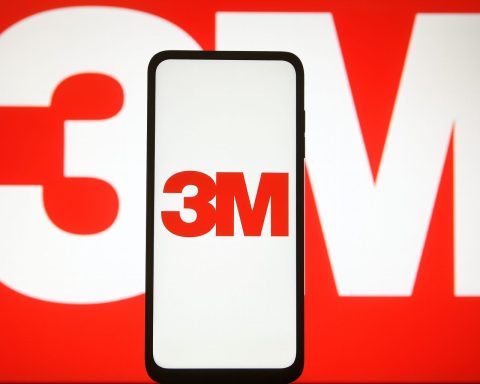- The global sleep tech devices market was valued at over $21 billion in 2023 and is projected to grow rapidly.
- In 2024, major wearables such as the Samsung Galaxy Watch and Apple Watch gained FDA-approved sleep apnea detection capabilities.
- The latest Oura Ring Generation 4 includes research-grade sensors for blood oxygen and breathing disturbances to flag sleep apnea and related issues.
- Sleep Number 360 smart beds track heart rate, breathing, and movement, and automatically adjust firmness and can tilt or vibrate to reduce snoring.
- Eight Sleep’s Pod 3 Cover is a water-cooled or heated mattress topper that maintains temperature on each side all night and costs over $2,000 plus a subscription.
- Smart lighting and ambience devices such as Hatch Restore 2 with sunset and sunrise features, and Philips Hue capable of warming colors at night, help regulate circadian rhythm.
- Modius Sleep, launched in late 2024 after FDA clearance as a prescribable neurostimulation device for chronic insomnia, delivered 95% sleep improvement in 4 weeks in a clinical trial.
- Somnee is a closed-loop tACS headband that claims to make you fall asleep 50% faster, is said to be 4× more effective than melatonin, and has raised $10 million to date for further development with NBA players.
- SleepioRx received FDA clearance in August 2024 as a prescription digital CBT‑I therapy, with over 90 studies backing digital CBT-I and Medicare considering reimbursement starting in 2025.
- Light and sound tech, including Hatch Restore 2, Philips Hue lighting, earables, white/pink noise, and guided audio, can aid sleep but often lack independent validation, though pink noise has shown deep-sleep benefits in controlled studies.
The Rise of Sleep Tech: Hope for the Sleepless or Just Hype?
Insomnia is a modern epidemic, and tech innovators see a massive opportunity in our collective quest for better sleep. In 2024 and 2025, a wave of new sleep technologies has hit the market, promising to deliver “the best sleep of your life.” The global sleep tech devices market was valued at over $21 billion in 2023 and is projected to grow rapidly [1]. From smartwatches and rings that log every doze and toss, to high-tech mattresses and even brain-zapping headbands, the “sleep‑deprived dollar” is fueling countless gadgets [2]. Many of these devices make bold claims – some genuinely innovative, others arguably bordering on snake oil. As one tech writer (and longtime insomniac) put it, “there is no quick fix or cure for insomnia, but the best sleep gadgets and apps can help some” [3].
How big is this trend? A recent survey found more than one-third of Americans (35%) have tried an electronic sleep tracker, and 77% of those users felt it was helpful, with 68% even changing their behavior based on the data [4]. Clearly, people are eager to “optimize” their slumber with technology. “As sleep trackers grow in popularity, we see more people pay attention to their sleep quality, routine and duration,” says Dr. Seema Khosla of the American Academy of Sleep Medicine (AASM) [5]. Good sleep is recognized as essential for health – poor sleep has been linked to increased risks of diabetes, heart disease, obesity, even dementia [6]. With insomnia affecting roughly 1 in 4 adults each year in the U.S. [7], it’s no surprise that entrepreneurs and big tech companies alike are pouring effort into sleep solutions.
Yet amid the hope, there’s also hype and skepticism. The UK’s sleep-tracker industry is already worth hundreds of millions of pounds and forecast to double by 2030 [8]. But some experts worry all this data might make insomnia worse, coining terms like “orthosomnia” – an unhealthy obsession with achieving perfect sleep driven by tracker metrics [9]. Could chasing the ultimate sleep score ironically rob us of rest? As we dive into the latest sleep gadgets, we’ll explore both the enthusiasm and the caution from sleep doctors and researchers. Can these high-tech tools truly cure insomnia, or are they just expensive gimmicks? Let’s look at the gamut of sleep tech – from wearables and smart beds to neurostimulators, apps, and sensory devices – and see what evidence (if any) backs their promises.
Wearable Sleep Trackers: Data-Driven Dreams on Your Wrist
Chances are you or someone you know wears a device to bed – a smartwatch, fitness band, or smart ring – to track sleep. Wearable sleep trackers have become ubiquitous. Flagship devices like the Apple Watch, Samsung Galaxy Watch, Fitbits, Garmins, and the Ōura Ring all offer insights into your night, estimating how long you slept and even how much time you spent in REM or deep sleep. In fact, 2024 saw major advancements: Samsung’s Galaxy Watch gained FDA authorization for a sleep apnea detection feature [10] [11], and Apple Watches introduced similar FDA-approved sleep apnea detection capabilities [12]. This marks a new level of medical legitimacy for consumer wearables, expanding from step counts into genuine health monitoring. The latest Oura Ring (Generation 4) touts “research-grade” sensors for blood oxygen and breathing disturbances, aiming to flag sleep apnea and other issues [13] [14]. Clearly, wearables are not just counting sheep – they’re starting to diagnose why the sheep might be running away.
Do wearables help with insomnia? They certainly help quantify sleep. Many users find that having nightly data makes them more mindful of habits (e.g. consistent bedtimes) [15]. “Sleep trackers can help keep us accountable…remind us to maintain a consistent bedtime…and healthy lifestyle,” notes Dr. Khosla [16]. Some devices even try to coach you: newer models use machine-learning to learn your patterns and suggest adjustments. For instance, the Citizen CZ Smart watch analyzes your chronotype and predicts when you’ll feel fatigued, nudging you to adjust routines [17] [18]. High-end trackers like WHOOP or Garmin can measure your “recovery” and readiness, blending sleep data with exercise and stress metrics.
However, for chronic insomniacs, all this data can be a double-edged sword. There’s growing recognition of orthosomnia, where people become so fixated on their sleep stats that it increases anxiety and worsens sleep. “Orthosomnia refers to individuals for whom tracking becomes stressful,” explains Dr. Rebecca Robbins, a sleep scientist at Harvard [19]. She told Good Morning America that for some, “the information [from trackers] stresses them out, and then it causes them to struggle the next night” [20]. In other words, lying in bed worrying about why your watch says you’re only 11% in deep sleep is not exactly conducive to sweet dreams. Sleep therapist Katie Fischer sees many clients chasing a “perfect” night as scored by their device. “Perfect sleep doesn’t really exist – good sleepers usually don’t think about sleep at all,” she says, warning that obsessing over an 8-hour ideal or a magic sleep score often backfires [21] [22]. Indeed, a study in the Journal of Clinical Sleep Medicine observed that geeking out over nightly sleep data can fuel insomnia, as people spend excessive time in bed trying to hit targets or grow anxious about not achieving “good enough” stats [23] [24].
So, while wearables can be helpful tools (and are improving in accuracy), experts urge moderation. Use the gadgets as a general guide, not an infallible judge. “It’s important to use the information in context of how you feel,” advises Dr. Khosla – and if your tracker is causing stress, “it’s okay to put it away” [25] [26]. After all, sleep is a natural biological process, not a video game to be maxed out. The data revolution is exciting – and for conditions like sleep apnea, potentially lifesaving – but insomnia isn’t solved purely by numbers on an app. Often, it still comes back to those age-old habits (regular schedule, wind-down routine, limiting late caffeine, etc.) that no smartwatch can magically enforce for you.
Smart Beds and Bedroom Tech: Mattresses Get Brainy
If wearables are the “fitness trackers” of sleep, smart beds and bedroom gadgets are aiming to be your personal sleep lab and environment optimizer. The humble mattress has gone high-tech. Take the Sleep Number 360 smart beds or newcomers like Eight Sleep – these beds are packed with sensors and connectivity. They can track your heart rate, breathing, and movement through the night (using ballistocardiography, basically feeling your micro-movements) without you wearing anything [27] [28]. More impressively, they adjust your sleeping conditions on the fly. Sleep Number beds automatically tweak firmness and even gently tilt or vibrate if they detect snoring (to shift you out of it). Eight Sleep’s Pod 3 Cover, on the other hand, focuses on thermal hacking your sleep: it’s a water-cooled (or heated) mattress topper that keeps each side of the bed at a set temperature all night [29] [30]. Since temperature is critical for sleep quality, the Pod lets you schedule warmer or cooler phases to encourage deep sleep and REM [31]. Reviewers found that climbing into a pre-warmed bed or having cooling kick in during the hot early morning hours “demonstrably improved sleep duration and quality”, albeit at a hefty price (the device costs over $2,000 plus a subscription) [32]. Sleep Number has similarly reported that personalized heating/cooling can significantly improve sleep, especially for women with menopause-related night sweats [33] [34].
Beyond beds, the entire bedroom environment is getting a smart makeover. Smart bedside lamps like the popular Hatch Restore 2 combine a sunset simulator (to wind you down with dimming light) and a sunrise alarm (to wake you gently with increasing light) [35]. Light is a powerful regulator of circadian rhythm, so gadgets like these aim to replace jarring alarms with a natural, cortisol-friendly wake-up. Smart lighting systems (Philips Hue, etc.) can shift color temperature to warmer hues at night, reducing blue light exposure that would otherwise tell your brain to stay alert [36] [37]. There are also smart white noise machines and speakers that can play custom sounds or even respond to noise – e.g. if traffic or a barking dog is detected, they could automatically mask it with soothing sound.
Importantly, many of these bedroom tech products claim not just to monitor sleep but to improve it. However, are those claims proven? Here the evidence often lags the marketing. For example, Eight Sleep markets its bed as boosting sleep fitness, but an independent review noted “there’s still no scientific evidence to prove what they suggest their technology can do” (the company cites its own internal study on improving sleep quality and recovery) [38] [39]. In other words, a high-tech bed may feel luxurious – and certainly a comfortable mattress at the right temperature will help anyone sleep better – but we should be wary of any insinuation that a smart bed cures chronic insomnia. Buyer beware: Healthline reviewers caution that many products lack independent studies, so “proceed cautiously when encountering products claiming to improve health” [40] [41].
That said, the trend is toward integrating AI and health monitoring directly into our beds. Alexandra Zatarain, co-founder of Eight Sleep, envisions a future where “your bed is going to diagnose you” [42] [43]. “We spend seven to nine hours every night in bed… so it makes sense that when you go to sleep, your bed is going to track you, and the day something’s wrong, it’ll tell you,” Zatarain says [44]. Her company is actively working on using the mattress’s built-in sensors to detect early signs of illness or stress, essentially turning the bed into a preventative health device [45] [46]. The bed could notice subtle changes – say in your heart rate variability or breathing patterns – and alert you or even pass info to your doctor. “Whether it does a direct diagnosis or refers you to a doctor… someone’s going to get there,” Zatarain notes confidently [47] [48]. It’s a bold prediction, but not far-fetched: with AI analyzing long-term trends, your mattress might one day warn, “Hey, your sleep has been deteriorating, maybe get your thyroid checked,” or predict an oncoming flu.
At the same time, Zatarain wisely admits that technology isn’t a panacea for sleep woes. “Tech can make it easier to solve some problems… but it doesn’t mean that with technology alone you’re going to suddenly get a better night’s sleep,” she says [49] [50]. You still need to prioritize healthy habits – no gadget can force you to put down your phone at 10pm or avoid that late espresso. The smartest bed in the world won’t help if you only climb into it at 3 AM after binge-watching TV. In short, smart beds and bedroom tech can optimize conditions, but the human in the bed is still in control (for now!). Use these tools as aids, not crutches: they excel at tweaking temperature, light, and sound – the ambient factors that do influence sleep deeply – and at gathering useful data. Just remember that sleep hygiene basics (consistent schedule, a dark cool room, relaxation before bed) remain the foundation, high-tech or not.
Zapping the Brain to Sleep: Neurostimulation Devices
Perhaps the most futuristic – and to some, slightly sci-fi – category of sleep tech are devices that actively alter your brain’s activity to induce sleep. These include headbands or wearable devices that use neurostimulation (electrical or magnetic pulses, sound or vibrations timed to brainwaves, etc.) to try to nudge your brain into a sleep-friendly state. Think of them as gadgets that don’t just track your sleep, but attempt to produce sleep by interacting with your neurons. Can’t fall asleep on your own? Just wear a device that electrically “lulls” your brain into slumber. It sounds wild, but several companies and researchers are pursuing exactly this approach – with some promising results.
One notable entrant is Modius Sleep, a headset launched in late 2024 after earning FDA clearance as a prescribable device for chronic insomnia [51] [52]. Worn for 30 minutes each evening, Modius Sleep sends a gentle electrical pulse into the vestibular nerve in your head [53] [54]. By stimulating the vestibular nerve (which influences brain areas controlling circadian rhythm and arousal), the device essentially tries to “reset” or stabilize your sleep patterns. In a clinical trial, 95% of participants improved their sleep within 4 weeks of using Modius Sleep (results published in the journal Brain Stimulation) [55] [56]. “I was deeply concerned by the amount of sleeping pills my patients were relying on… I knew there was a better way,” says Dr. Jason McKeown, a neurologist and CEO of Neurovalens, the company behind Modius [57] [58]. “By non-invasively tapping into the brain’s natural sleep cycles, Modius Sleep allows you to fall asleep faster and stay asleep longer,” McKeown explains [59] [60]. Essentially, this device is a form of electrotherapy for insomnia – drug-free and applied at home. It even won the National Sleep Foundation’s 2024 SleepTech® award for innovative sleep technology [61] [62]. While an $1,185 headset might not be a first resort for everyone, the existence of an FDA-cleared neurostimulation treatment for insomnia is an exciting development in sleep medicine. It shows that regulators see potential here, and it offers hope for those who don’t tolerate sleep drugs or for whom therapy alone isn’t enough.
Another much-buzzed gadget is Somnee, a smart sleep headband co-founded by renowned UC Berkeley neuroscientist Dr. Matthew Walker (author of Why We Sleep). Somnee uses closed-loop transcranial electrical stimulation (tACS) – basically, it measures your brainwaves via EEG and then delivers precise, gentle electrical pulses in sync with your sleep stages to deepen sleep and speed up sleep onset [63] [64]. The company claims this “electroceutical” approach can make you fall asleep 50% faster and significantly boost your time in restorative deep sleep [65] [66]. In fact, Somnee boldly advertises itself as “4× more effective than melatonin, 2× more effective than CBT‑i, and 1.5× more effective than Ambien” at improving sleep efficiency [67] [68] – eye-popping claims that come from a peer-reviewed study the team published in Frontiers in Human Neuroscience. Investors are impressed: Somnee recently raised $10 million and is testing its second-gen headband with NBA players, positioning it as a performance and wellness tool as much as an insomnia remedy [69] [70]. “We began building this tech to explore a provocative question: could a sleep aid communicate in the same electrical dialect as the brain itself? That is, an ‘electroceutical,’ not a pharmaceutical,” says Dr. Walker [71] [72]. By “speaking” to the brain in its own language – subtle electrical rhythms – the goal is to create a “blast radius of benefit: deeper sleep, more efficient sleep, and a quicker descent into sleep” [73] [74]. In simpler terms, Somnee’s headband tries to gently coax your brain into sleep as if guiding an orchestra’s tempo, rather than knocking you out with a sedative drug. It’s a cutting-edge concept that blurs the line between gadget and medical treatment.
There are others: the Dreem headband (a French invention) also used EEG and auditory stimulation to enhance deep sleep, and while the consumer product is no longer sold, its technology lives on in clinical research and digital therapy programs. The SleepLoop device out of ETH Zurich plays near-silent clicks during deep sleep to strengthen slow-wave activity (a technique shown to possibly improve memory and sleep quality) [75] [76]. URGOnight is another headband aimed at insomnia, but instead of working during sleep, it provides neurofeedback while you’re awake, training you to produce brainwaves conducive to better sleep at night. Even more unconventional, a device called Hapbee emits ultra-low frequency magnetic fields to mimic certain neurochemical states – it claims it can make your brain feel as if it released melatonin (for sleep) or caffeine (for alertness) depending on the signal [77] [78]. The jury is certainly out on some of these less orthodox methods, and many lack solid independent evidence [79]. The AASM notes that it’s often unclear for whom these devices are intended or effective, and many product claims aren’t yet backed by published research [80].
Still, the concept of tech-assisted relaxation and neurotherapy is intriguing. Some users who have tried devices like cranial electrostimulation (for example, the Fisher Wallace Stimulator, a prescription device for insomnia and anxiety) report it helps calm a racing mind. And research is ongoing: scientists are studying everything from transcranial magnetic stimulation during sleep to targeted memory reactivation (playing specific sounds or cues to erase nightmares or strengthen good memories). It’s worth noting that none of these gadgets is a magic wand – even the ones with clinical trials show improvements, not 100% cures, and they often work best combined with healthy sleep practices. But for those suffering chronic insomnia who haven’t found relief in traditional methods, these neurotechnology innovations offer a novel path that’s drug-free and personalized. The next time you strap on a headband before bed, it might just be programming your brain for a better night’s rest.
Digital Therapeutics: An App as Your Sleep Doctor
Not all sleep tech comes in a shiny gadget; some of the most powerful developments are happening in software – specifically, digital therapeutics for insomnia. These are clinically tested apps or online programs that deliver therapy via your phone or computer. The best-known is based on Cognitive Behavioral Therapy for Insomnia (CBT-I), the gold-standard, non-drug treatment for chronic insomnia. Traditionally, CBT-I is delivered by a therapist over several sessions, teaching patients how to reframe sleep anxieties, adjust sleep schedules, and practice habits that promote sleep. But now, apps are stepping in to provide these techniques at scale – and they’re getting official recognition.
In August 2024, the FDA granted clearance to SleepioRx, making it one of the first prescription digital therapeutics for chronic insomnia [81]. Sleepio (developed by Big Health) had been available for years as a consumer wellness app and through some employers/insurers, but FDA clearance of SleepioRx means doctors can formally prescribe it as a treatment [82] [83]. It delivers a structured 6- to 9-week CBT-I program through an interactive app – no human coach required. “It delivers evidence-based techniques that target the cognitive and behavioral factors that maintain chronic insomnia,” explains Big Health CEO Yael Berman [84] [85]. In trials, digital CBT-I has been shown to be quite effective, with one study showing around 76% of users significantly improved their sleep after the program [86]. By getting FDA clearance, SleepioRx affirmed that it can be used “as an adjunct to usual care” for adults with insomnia disorder [87]. Berman points out that until now, the main options for insomnia were medications or long waits to see one of the relatively few trained therapists [88]. “This enables providers to prescribe this treatment for the first time,” she says – and because “Sleepio doesn’t need human intervention – that’s the magic of it – it’s more easily scalable” [89] [90]. In other words, an app can reach many more patients than scarce sleep specialists, and at any time of day. With over 90 research studies backing it [91], Sleepio and its peers represent a marriage of clinical science and tech convenience.
Sleepio isn’t alone. Another digital therapeutic, Somryst (by Pear Therapeutics), was FDA-authorized a few years prior as a prescription CBT-I app. And there are various other CBT-I based programs like Dawn Health, CBT-i Coach (a free VA app), etc., though not all have FDA clearance. According to the AASM, as of 2023 the only FDA-cleared insomnia apps were Somryst and SleepioRx [92]. The significance of FDA clearance is that these apps can potentially be covered by insurance or Medicare in the future [93]. In fact, Medicare has proposed creating a reimbursement code for prescription digital behavioral therapies starting in 2025 [94]. If that goes through, your doctor might not only prescribe an app, but it could be paid for just like a drug – a strong sign that digital treatments are entering mainstream healthcare.
Of course, there are dozens of non-prescription sleep apps that claim to help with insomnia or sleep quality. Many offer pieces of CBT-I or general sleep hygiene advice, some provide relaxation exercises or guided meditations, and others focus on sleep tracking and smart alarms. Popular wellness apps like Calm and Headspace have sleep sections (bedtime stories, meditation) that many people find helpful for unwinding. Other apps like Sleep Cycle, SleepScore, or Pillow use your phone’s microphone/accelerometer as a mini sonar to estimate your sleep, and then wake you during a light sleep phase so you feel less groggy. However, the caveat is that most consumer sleep apps lack rigorous studies on their efficacy [95] [96]. They can be great tools for relaxation or habit-building, but if someone has true insomnia disorder, an app with proven CBT-I content is likely to be far more effective than, say, one that just generates soothing sounds. The good news is that even some commercial apps do incorporate evidence-based techniques. For example, apps like Rise or Dayzz help users track habits and follow science-based recommendations (like keeping consistent wake times, optimizing light exposure, etc.). And research suggests that self-guided digital CBT-I can indeed improve insomnia symptoms for many adults [97].
One emerging trend is apps that personalize their advice by integrating data from other devices – for instance, an app might pull in your sleep tracker data or even smart bed data (Sleep Number’s SleepIQ app, for instance, syncs with its smart mattress). We’re also seeing niche apps: ones for shift workers to manage odd hours, for jet lag (like Timeshifter), and even experimental ones for nightmare therapy (digital image rehearsal therapy). The bottom line: your smartphone can now serve as a sleep coach in various forms. And for those wary of sleeping pills, knowing that an app like Sleepio is clinically validated and now FDA-cleared is encouraging. It’s essentially therapy at your fingertips – accessible, scalable, and with no side effects beyond a little extra screen time.
Light and Sound: Engineering a Sleep-Friendly Environment
Another class of insomnia-fighting tech doesn’t go on your body or deliver therapy per se – instead, it modifies your surroundings to be more conducive to sleep. Light and sound are two powerful cues that can make or break a night’s rest, so it’s no surprise there’s a market for gadgets targeting these senses.
Light-based sleep tech ranges from high-tech bulbs to wearable glasses. On the light therapy front, devices like bright light boxes or dawn simulators have long been used for circadian rhythm issues: e.g., getting morning bright light can help those with insomnia related to circadian delays (night owls) or seasonal blues. Now, we have smart lamps like the earlier-mentioned Hatch Restore or Philips SmartSleep clock that not only wake you gently with light but also provide a sunset mode to signal your brain it’s time to wind down [98]. There are also wearable light glasses (like Re-Timer or Pegasi glasses) that shine gentle light into your eyes to shift your internal clock – helpful if you need to adjust to a new time zone or schedule. Conversely, blue-light blocking glasses and screen filter apps address the nighttime side of things, attempting to minimize the blue wavelengths that suppress melatonin. While simple “night mode” settings on phones are free and widely used, some swear by dedicated amber glasses at night to improve sleep onset.
On the sound side, technology tries to both mask disruptive noise and use sound as a therapy. Good old white noise machines have been modernized with apps and smart speakers – you can now play endless loops of rain sounds or ocean waves through Alexa or your phone. Pink noise (a softer balanced noise) has gained popularity after studies found it might enhance deep sleep by matching the brain’s slow-wave frequencies. Some devices take this further with adaptive soundscapes: they listen to your environment and tweak the volume or type of sound in real time. For example, if a dog barks, the machine might momentarily swell the volume of your rain sound to cover the spike. “Earable” devices – earbuds or headband-style headphones made for sleep – have appeared for those who can’t tolerate a loud machine in the room. Bose’s Sleepbuds (since discontinued but others have copied) played soothing sounds directly in the ear and masked outside noise without the fully awake-level volume of normal earbuds. The AASM reports that new “earables” are leveraging auditory stimulation like white noise, binaural beats, and personalized soundscapes to reduce anxiety and sync brainwave activity for relaxation and deeper sleep [99] [100]. In fact, some high-end headbands (e.g., the FRENZ Brainband or Philips Kokoon headphones) use EEG sensors to detect when you’re in light vs deep sleep and adjust the audio stimuli in a closed loop [101] [102]. The idea is to play the right tones at the right time – perhaps gentle music during light sleep to keep you relaxed, or precisely timed pink noise pulses during deep sleep to strengthen those delta waves.
There are also quirky devices like the 2breathe Sleep Inducer, which is a sensor belt that plays tones guiding you to breathe slower (longer exhalations), essentially a biofeedback to trigger relaxation [103] [104]. Another example: Cove, a wearable band that sits over your temples and delivers subtle vibrations; it claims to activate the part of the brain that regulates anxiety, effectively “rocking” your brain into a calmer state for sleep [105] [106]. And for those whose insomnia is worsened by racing thoughts, there are guided mindfulness meditation apps and devices (from simple apps like Calm, to more involved devices like Muse – a meditation headband that gives real-time feedback to keep your mind from wandering).
Crucially, light and sound therapies often have a solid basis in sleep science: controlling light exposure is a key part of circadian rhythm management, and soothing sound or white noise is a longstanding sleep aid to block sudden noises and promote relaxation. These tech products mostly package and automate what you could otherwise DIY (anyone can dim the lights and play a fan noise, but a gadget can do it smarter or more conveniently). Do they cure insomnia? Not directly – if you have chronic insomnia, a white noise machine won’t address the underlying cognitive behaviors. But they can ease the process of falling asleep and prevent unnecessary awakenings. For instance, if street noise or a snoring partner often wakes you, a smart noise masker can be a game-changer. If anxiety is an issue, a guided wind-down routine with calming audio and dimming lights (and yes, maybe some lavender diffuser too) can become a Pavlovian signal to your brain that it’s safe to let go.
Experts generally view these environmental aids as helpful adjuncts: they’re rarely harmful, and many people find them beneficial. Just manage your expectations – a fancy sunrise alarm won’t single-handedly fix insomnia if, say, your root problem is anxiety about not sleeping. But in combination with other approaches, controlling “light, noise, and temperature” is a pillar of good sleep hygiene. As Alexandra Zatarain noted, people often blame only their mattress for poor sleep, when actually “temperature, light, noise…even humidity… have a much bigger impact” on sleep than we realize [107] [108]. The good news is that modern tech gives us unprecedented control over those factors. We can essentially engineer our bedrooms to be as sleep-friendly as possible, like personalizing a climate-controlled, sound-sculpted cocoon each night. That’s a far cry from decades past when you were stuck with whatever your room and neighborhood handed you.
Hype vs. Reality: Do These Gadgets Really Work?
With so many shiny sleep toys on the market, a critical question remains: where’s the proof? Can tech truly “cure” insomnia, or at least meaningfully improve sleep for the average person? The answer is mixed. Some devices and apps have strong evidence behind them – particularly the CBT-based digital therapeutics, which are rooted in decades of behavioral sleep medicine research and now backed by clinical trials. For example, multiple randomized studies show that digital CBT-I (like Sleepio) can reduce the time it takes to fall asleep and cut down on nighttime wake-ups, often with benefits lasting months or years after use [109]. When an app gets FDA clearance, it has to demonstrate safety and effectiveness, so those are not snake oil. Likewise, a device like Modius Sleep was cleared in part based on a clinical study (improving sleep in 95% of users in 4 weeks) [110] [111]. It doesn’t mean it works for everyone or that it’s better than established treatments, but it’s a positive signal.
On the other hand, many consumer sleep gadgets have scant independent research. Companies often advertise impressive stats (“fall asleep 50% faster!” [112]) which may come from small internal studies or are not published in peer-reviewed journals. Sleep researchers frequently caution that enthusiastic testimonials or awards don’t equal scientific validation. As the AASM’s Emerging Technology Committee pointed out, a lot of products “lack performance evidence supporting the product claims” and don’t clearly state who they’re best for [113]. For example, a headband that claims to boost slow-wave sleep sounds great – but if you’re 25 and already have plenty of deep sleep, it might do nothing noticeable (or the extra slow waves might not confer any extra benefit). Or a fancy AI-powered ring might tell you how much REM you got, but consumer devices can be inaccurate in sleep stage tracking, misidentifying light vs REM sleep, etc., so that info could be taken with a grain of salt.
Even when gadgets do what they promise (e.g., accurately track sleep, or cool your bed, or play soothing sounds), the effect on insomnia can be indirect. Insomnia often has psychological components – worry about sleep, conditioned anxiety with the bed, etc. Some tech addresses that: for instance, a gentle coaching app or a relaxing audio can reduce anxiety, which will help. But other tech might actually feed the anxiety: if you become obsessed with your sleep score or feel pressure to “perform” in deep sleep because your $300 device is watching, that can worsen insomnia. Dr. Robbins notes that for perfectionist personalities, trackers can be “triggering”, as they strive for a perfect readout when “sleep is not always going to be perfect every night” [114] [115]. This paradox – that tracking can both help and harm – is why expert guidance is important. Many sleep doctors now ask patients about tracker data and use it as a conversation starter, but they also educate patients on normal sleep variation so they don’t panic over every blip.
There’s also the risk of over-reliance on gadgets. If someone believes they “can’t sleep without” their specific white noise or their particular app, it can become a crutch – much like people get psychologically dependent on sleeping pills. Ideally, the tech should be a bridge to help you develop sustainable habits or fix issues (like shifting your body clock or learning to meditate), rather than a permanent must-have. Sleep professionals emphasize that behavioral changes (like regular schedule, reducing caffeine/alcohol, cognitive techniques to calm the mind) have the most enduring impact on insomnia. Tech can facilitate those changes – e.g., reminding you to go to bed, or teaching you a breathing exercise – but ultimately the user has to internalize the healthy behaviors.
From an evidence standpoint, we should mention one more thing: not all sleep problems are insomnia. Some people think they have insomnia but actually have an underlying disorder like sleep apnea, restless legs syndrome, or anxiety/depression that’s manifesting as insomnia. Gadgets may not catch those distinctions. A tracker might show fragmented sleep, but it can’t tell if that’s due to insomnia or undiagnosed apnea (though wearables are edging into apnea detection now [116] [117]). A digital app might not work if your “insomnia” is actually from chronic pain waking you up. In such cases, the tech could even provide false reassurance or send you down the wrong path. Doctors stress the importance of medical evaluation for persistent sleep issues. As Dr. Khosla put it, if your tracker shows something like low oxygen or you just feel unrefreshed despite gadgets, “have it evaluated by a sleep clinician” [118].
In summary, the current crop of sleep tech can absolutely help improve sleep for many people, but calling it a “cure” for insomnia is premature. Insomnia is a complex beast – partly physiological, partly psychological – and typically requires a holistic approach. Tech is one tool in the toolbox. Some positives: wearables are raising awareness and encouraging better habits [119] [120]; apps are making proven therapies accessible; new devices are offering alternatives to drugs. Some negatives: data overload and anxiety for some; lack of regulation for many products (no FDA oversight on a random sleep lamp or supplement that pops up on Instagram); and the simple fact that what works is highly individual. “We are all different, so what works for one person may not work for the next,” one reviewer wisely noted [121]. That means a bit of trial and error is involved for consumers.
Expert Opinions: Optimism and Skepticism in Balance
What do sleep experts and doctors really think about all this tech? In a word, their views are balanced. Most experts are excited about the potential of technology to improve sleep health – especially by engaging people in their own sleep and providing new treatment avenues – but they also caution against viewing tech as a silver bullet.
On the optimistic side, you have quotes like this from venture capitalist Vinod Khosla, who invested in Somnee: “Sleep is the cheapest, most underused longevity drug we have… Whereas others attempt to track sleep, Somnee’s uniquely noninvasive approach tunes it every night… That’s why we backed them from day zero.” [122] [123]. There’s a genuine belief among many in the tech industry that we’re on the cusp of major breakthroughs: AI algorithms that find hidden patterns in our sleep data, closed-loop systems that adjust our environment perfectly, and personalized interventions that could finally crack the code of insomnia. Many sleep doctors are also tech-enthusiastic, at least in the sense of welcoming more tools. Dr. Phyllis Zee, a renowned sleep physician, has spoken about how wearables and apps can help patients be more engaged and how data from long-term tracking could enable more personalized care than one-night sleep lab studies. And as mentioned, organizations like the National Sleep Foundation now even give awards for SleepTech® innovations, encouraging the field [124].
Yet, alongside the excitement is healthy skepticism from the clinical community. A common refrain: accuracy and validation. Dr. Cathy Goldstein, a neurologist at Michigan, quipped in an interview that when patients bring in their tracker reports, “I look at it the same way I’d look at a dream journal – it provides some insight, but I won’t treat based on it”. That might be changing as devices improve, but many physicians still don’t fully trust consumer sleep data for diagnosis. Another concern is overselling and commercialization of basic science. For instance, labs have shown pink noise can enhance deep sleep in controlled settings, but that doesn’t mean every $300 “slow wave enhancer” sold online truly replicates those results. “There is no good evidence [mouth taping helps sleep]… I worry people are trying things with more enthusiasm than evidence,” said one doctor regarding a TikTok sleep trend [125] [126] – a statement that could apply to many fads.
Experts like Dr. Rebecca Robbins and Dr. Seema Khosla provide a middle ground perspective: use tech, but wisely. Robbins lauds health trackers’ benefits but warns they “may be triggering for perfectionists or those with Type A personalities” [127]. Khosla similarly says trackers can be great for accountability, but “if your tracker is causing you to lose sleep… it is okay to put it away” [128]. The underlying message is that technology should serve you, not stress you.
Sleep physicians also emphasize that while gadgets can aid sleep, addressing insomnia often requires addressing thoughts and behaviors. Dr. Jade Wu, a behavioral sleep medicine specialist, has said that if someone is anxious and unable to sleep, an app that teaches them to reframe thoughts or practice relaxation is much more valuable than one that just tells them they slept poorly. In other words, the content (the therapy or advice) matters more than the fancy interface.
Lastly, there’s the question of long-term outcomes. Will using these gadgets actually improve people’s sleep in the long run, or just be short-term boosts? The field is so new that we don’t have much data on long-term use. Some worry about the placebo effect – a new device might help for a few weeks due to novelty and the user’s expectation, but then the benefit fades. Others worry about data privacy – all these sleep apps and devices collect sensitive health data. Could it be misused by third parties or insurers? This is a challenge the industry is grappling with (some companies are very transparent and privacy-focused, others not as much).
In sum, expert opinion is that tech is a promising adjunct for sleep, but not a replacement for proven therapies or medical advice. As Dr. Zatarain of Eight Sleep aptly put it, “You need to put in the work on your side… technology’s not made – today at least – to deal with all that complexity” of human sleep [129] [130]. Or as Dr. Jason Ong, another sleep psychologist, said at a recent conference: tech can deliver the treatment, but it can’t replace the human touch when it comes to understanding a person’s sleep story. The best outcomes might come when technology and experts work hand in hand – using the strengths of each.
The Future: Personalized, AI-Driven Sleep – or Just a Good Night’s Sleep?
Looking ahead, the trends of 2024–2025 give a glimpse of where sleep technology is headed. Artificial intelligence is set to play a huge role. We’re already seeing AI in action: from smart watches detecting apnea using machine learning on sensor data, to apps that adjust sound/light in real time, to algorithms in development that can predict if you’re at risk of insomnia or other disorders [131]. One researcher received a grant to see if wearable sleep trackers plus AI can predict early signs of Alzheimer’s based on subtle changes in sleep patterns [132] [133]. Big data from millions of nights of sleep (collected by all these devices) could unlock new insights – perhaps identifying subtypes of insomnia that respond better to certain interventions.
Personalization is another buzzword. The future might see your sleep tech ecosystem all synced up: your bed, thermostat, wearable, and app working in concert. Imagine: your ring detects you had a stressful day (elevated heart rate), so your bedside app suggests a longer meditation and your bed auto-cools an extra 2°F to help. Your smart home might adjust lighting temperature and even room oxygen levels based on your sleep stage detected. It could get pretty high-tech – or perhaps invasive, depending on your view.
We’ll also likely see more clinical validation and regulation. As the FDA and healthcare payers get more involved, it will separate serious medical-grade solutions from mere wellness gadgets. This could mean more insurance coverage for things like CBT-I apps or prescription devices, which would greatly expand access. Conversely, some of the wilder unproven gadgets might fall to the wayside if they can’t demonstrate results. The hope is for a future where evidence-based digital treatments are integrated into standard care (e.g., every insomnia patient gets the option of a digital CBT-I program before sleeping pills).
On the consumer side, expect the line between medical and consumer to blur. Apple, Google, Samsung – these giants clearly are moving into health. If your Apple Watch could one day alert your doctor’s office that you have chronic insomnia and schedule a telehealth CBT-I session automatically, would you want that? Some might find it helpful, others too intrusive. It raises important questions of privacy and consent that society will need to navigate.
Finally, the future might bring totally new modalities. Researchers are exploring everything from acoustic holography (using sound to induce brain states) to closed-loop brain-computer interfaces that could one day treat insomnia in real time by stimulating or inhibiting certain brain regions (still very experimental!). Even genetics and wearables might combine – perhaps a personalized plan based on your genetic chronotype and real-world sleep data.
Amid these exciting possibilities, it’s important not to lose sight of the goal: helping people sleep better. Sometimes, the future of sleep tech might be surprisingly low-tech. For example, some experts advocate a return to basics: educating people that sleep isn’t a performance sport, combating societal issues like stress and overwork, and designing cities and schedules that are more sleep-friendly. Tech can assist, but it can’t replace a supportive environment and informed public.
In the end, what every insomniac wants is a good night’s sleep – to wake up feeling rested, without hours of staring at the ceiling. Tech offers tools to get there: it can track, nudge, soothe, and even medically treat to an extent. But tech alone isn’t a cure-all. As we’ve seen, it works best in tandem with lifestyle changes and, when needed, professional care. The gadgets are getting more sophisticated each year, and many people are indeed reporting the “best sleep of their life” thanks to some of these innovations. Just remember that behind each gadget’s promise, healthy sleep fundamentals still apply. Think of tech as the sidekick, not the hero – the Robin to your Batman in the fight against insomnia.
Conclusion: Can Tech Really Cure Insomnia?
After exploring this landscape of sleep technology – from wearables and smart beds to neurostimulators and apps – we come back to the provocative question: Can tech cure insomnia? The honest answer: not on its own, at least not yet. Insomnia, especially chronic insomnia, rarely has a single quick fix. It’s often deeply tied to our behaviors, thoughts, and overall health. However, technology is unquestionably making a positive impact for many. It’s never been easier to gather insights about your sleep patterns, or to access therapeutic techniques without a doctor’s appointment. The gadgets and apps can be powerful enablers: a smart bed can remove environmental barriers to sleep, a well-designed app can guide you through proven insomnia treatments, and a wearable can alert you to problems like apnea or poor sleep efficiency that you can then address [134] [135].
Perhaps the best way to view these technologies is as part of a comprehensive approach to better sleep. For someone with mild sleep troubles or bad habits, a tracker and some gentle app coaching might be all they need to improve. For someone with moderate insomnia, a digital CBT program or a targeted device (like a neurostimulator or relaxation wearable) could significantly help alongside lifestyle changes. And for severe cases, tech could complement professional treatments – for example, using an insomnia headband in addition to therapy, or leveraging data to find the right medication timing, etc.
Importantly, experts urge balance. “Use technology to your benefit, but you also need to put in the work on your side,” as Alexandra Zatarain says [136] [137]. Dr. Khosla from AASM similarly notes that having all this information is great, but “if [your] tracker is causing…overwhelm, so if it’s causing you to lose sleep, it’s okay to put it away” [138]. The key is to remember that you are in control, not the gadget. Technology should be empowering, not anxiety-inducing.
So, can tech promise “the best sleep of your life”? It certainly promises to try – and many gadgets deliver on improving at least some aspects of sleep. We’ve seen people credit their watch or their smart bed or a particular app with turning around their sleep schedule or banishing their midnight worries. We’ve also seen others for whom those did nothing, and a simple old-fashioned change (like cutting out late-night TV) made all the difference. Insomnia is personal, and so the solutions can be personal too.
In this exciting era of sleep innovation, the takeaway for the public is: be informed and open-minded, but also critical. Embrace the tools that work for you – whether that’s a high-tech EEG headband or just a pair of earplugs – and don’t feel compelled to use something that doesn’t help. Look for reputable, science-backed products (we’ve cited many above) and be wary of ones that sound too miraculous without evidence. And remember, if you struggle greatly with sleep, consulting a healthcare professional is wise; they can help navigate both traditional and tech-assisted options.
Tech may not have fully “cured” insomnia yet, but it’s certainly changing the game, mostly for the better. The gadgets of today are helping demystify sleep and giving power to the sleeper. With a bit of luck (and good science), the gadgets of tomorrow might indeed banish some causes of insomnia for good. Until then, consider tech as a helpful ally in your quest for restful nights. Sweet dreams – and sleep well!
Sources:
- Robards, K. Top sleep medicine news in 2024: Year in review [139] [140] (American Academy of Sleep Medicine News)
- Hill, S. The Best Sleep Gadgets and Apps [141] [142] (Wired, Jul 2024)
- Good Morning America – What is orthosomnia? How obsession with wearable tech could impact sleep [143] [144] (July 2025)
- Chaudhuri, A. Sleep perfectionists: the exhausting rise of orthosomnia [145] [146] (The Guardian, Oct 2024)
- AASM Survey Press Release – One in three Americans have used electronic sleep trackers [147] [148] (Nov 2023)
- Gliadkovskaya, A. Big Health clinches FDA clearance of digital therapeutic SleepioRx [149] [150] (FierceHealthcare, Aug 2024)
- Neurovalens Press Release – Modius Sleep treats chronic insomnia [151] [152] (PR Newswire, Oct 2024)
- SleepReview – Matt Walker’s Somnee Secures Funding to Advance “Electroceutical” Sleep Tech [153] [154] (Jul 2025)
- Zatarain, A. interview – Future of AI-powered mattresses [155] [156] (Tom’s Guide, Mar 2024)
- AASM – Staying current with insomnia-related technologies [157] [158] (Sleep Education)
References
1. www.gminsights.com, 2. www.wired.com, 3. www.wired.com, 4. aasm.org, 5. aasm.org, 6. www.fiercehealthcare.com, 7. www.fiercehealthcare.com, 8. www.theguardian.com, 9. www.theguardian.com, 10. aasm.org, 11. aasm.org, 12. aasm.org, 13. aasm.org, 14. aasm.org, 15. aasm.org, 16. aasm.org, 17. aasm.org, 18. aasm.org, 19. www.goodmorningamerica.com, 20. www.goodmorningamerica.com, 21. www.theguardian.com, 22. www.theguardian.com, 23. www.theguardian.com, 24. www.theguardian.com, 25. aasm.org, 26. aasm.org, 27. aasm.org, 28. aasm.org, 29. www.wired.com, 30. www.wired.com, 31. www.wired.com, 32. www.wired.com, 33. www.hcplive.com, 34. www.hcplive.com, 35. www.wired.com, 36. www.wired.com, 37. www.wired.com, 38. www.healthline.com, 39. www.healthline.com, 40. www.healthline.com, 41. www.healthline.com, 42. www.tomsguide.com, 43. www.tomsguide.com, 44. www.tomsguide.com, 45. www.tomsguide.com, 46. www.tomsguide.com, 47. www.tomsguide.com, 48. www.tomsguide.com, 49. www.tomsguide.com, 50. www.tomsguide.com, 51. aasm.org, 52. aasm.org, 53. www.prnewswire.com, 54. www.prnewswire.com, 55. www.prnewswire.com, 56. www.prnewswire.com, 57. www.prnewswire.com, 58. www.prnewswire.com, 59. www.prnewswire.com, 60. www.prnewswire.com, 61. www.prnewswire.com, 62. www.prnewswire.com, 63. somneesleep.com, 64. somneesleep.com, 65. somneesleep.com, 66. somneesleep.com, 67. somneesleep.com, 68. somneesleep.com, 69. sleepreviewmag.com, 70. sleepreviewmag.com, 71. sleepreviewmag.com, 72. sleepreviewmag.com, 73. sleepreviewmag.com, 74. sleepreviewmag.com, 75. aasm.org, 76. aasm.org, 77. aasm.org, 78. aasm.org, 79. aasm.org, 80. aasm.org, 81. www.fiercehealthcare.com, 82. www.fiercehealthcare.com, 83. www.fiercehealthcare.com, 84. www.fiercehealthcare.com, 85. www.fiercehealthcare.com, 86. respiratory-therapy.com, 87. www.fiercehealthcare.com, 88. www.fiercehealthcare.com, 89. www.fiercehealthcare.com, 90. www.fiercehealthcare.com, 91. www.fiercehealthcare.com, 92. aasm.org, 93. www.fiercehealthcare.com, 94. www.fiercehealthcare.com, 95. aasm.org, 96. aasm.org, 97. www.sciencedirect.com, 98. www.wired.com, 99. aasm.org, 100. aasm.org, 101. aasm.org, 102. aasm.org, 103. aasm.org, 104. aasm.org, 105. aasm.org, 106. aasm.org, 107. www.tomsguide.com, 108. www.tomsguide.com, 109. pmc.ncbi.nlm.nih.gov, 110. www.prnewswire.com, 111. www.prnewswire.com, 112. somneesleep.com, 113. aasm.org, 114. www.goodmorningamerica.com, 115. www.goodmorningamerica.com, 116. aasm.org, 117. aasm.org, 118. aasm.org, 119. aasm.org, 120. aasm.org, 121. www.wired.com, 122. sleepreviewmag.com, 123. sleepreviewmag.com, 124. www.prnewswire.com, 125. time.com, 126. time.com, 127. www.goodmorningamerica.com, 128. aasm.org, 129. www.tomsguide.com, 130. www.tomsguide.com, 131. pmc.ncbi.nlm.nih.gov, 132. aasm.org, 133. aasm.org, 134. www.fiercehealthcare.com, 135. aasm.org, 136. www.tomsguide.com, 137. www.tomsguide.com, 138. aasm.org, 139. aasm.org, 140. aasm.org, 141. www.wired.com, 142. www.wired.com, 143. www.goodmorningamerica.com, 144. www.goodmorningamerica.com, 145. www.theguardian.com, 146. www.theguardian.com, 147. aasm.org, 148. aasm.org, 149. www.fiercehealthcare.com, 150. www.fiercehealthcare.com, 151. www.prnewswire.com, 152. www.prnewswire.com, 153. sleepreviewmag.com, 154. sleepreviewmag.com, 155. www.tomsguide.com, 156. www.tomsguide.com, 157. aasm.org, 158. aasm.org
